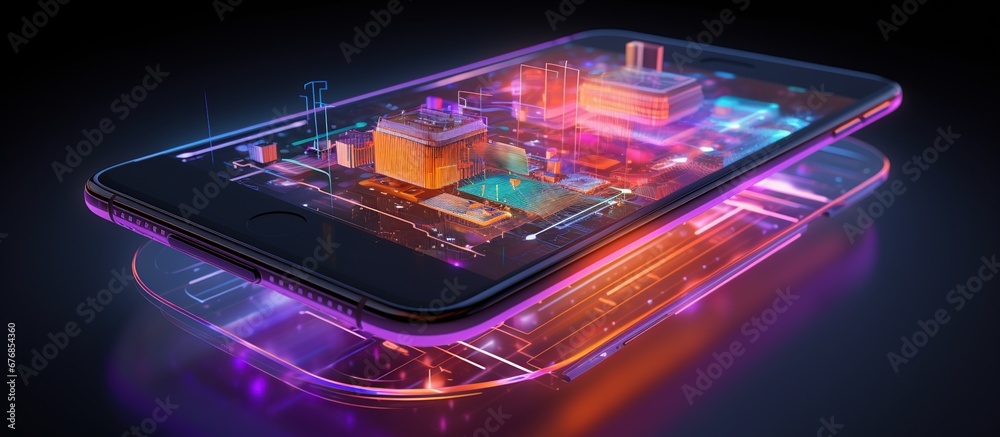INTRODUCTION:
Mobile technology is a technology that uses many devices. They enable access to communication, computing, the internet, and email. It can send and receive text messages, and much more. This technology is the best way to access entertainment, communication, education, and more. We connect effortlessly with this technology.

Table of Contents
USES OF MOBILE TECHNOLOGY
Mobile technology is used in many fields, such as:
- Communication
- Online banking
- Entertainment
- Writing
- Recording
- Photography
And more.
Following are the different types of uses for mobile technology
1: COMMUNICATION
- VOICE CALL: In voice calls, users only send information by sound. They use apps like WhatsApp, Zoom, Messenger, and FaceTime and users use this type of communication for many purposes. These include sharing personal info, customer care, and business.
- VIDEO CALL: With this method, users can communicate with each other using a camera over the internet. Video calls allow users to see their faces and the sound and video calls use a different type of work. Users use the video call for online classes, meetings, and telehealth.
- TEXT MESSAGES: In this method of communication the users receive and send a message up to 160 words. The message is in writing, and no multimedia is involved in this communication. This is a simple way of communication.
- EMAIL: This is a way for users to send and receive digital messages using electronic devices. In this method, each user has a different and unique address known as an email address, such as name232@gmail.com.
2: INTERNET ACCESS
Internet access is connecting different devices to the internet using various methods.
Following are some sources of connection.
- WEB BROWSING: Web browsing is using software to connect to the web. Users use different software, like Safari, Google Chrome, and Opera.
- ONLINE SHOPPING: It is a way to buy or sell anything, anywhere. Users use various software, apps, and websites to buy or sell anywhere. These include Alibaba, Amazon, and eBay. This method is also called e-commerce.
- SOCIAL MEDIA: Social media are platforms where users share ideas, content, and data. Users interact with each other on these platforms. Facebook, YouTube, TikTok, Instagram, and X are the major examples of social media.
- ENTERTAINMENT: The internet also entertains the user. The user uses various platforms, like Netflix, YouTube, TikTok, and Shopify, to do this.
- GAMING: Gaming is entertainment, too. The Internet lets users play games to have fun. Examples include Asphalt, Candy Crush, Call of Duty, and PUBG.
- VIDEOGRAPHY: Most often, users film with their mobile phone cameras. They then use various apps and websites to apply filters and change colors. Popular options include Adobe KineMaster, LumaFusion, and ProCam 8.
- PHOTOGRAPHY: Like videography, the web lets users edit photos. Apps like Pic Art, Snapseed, and Google Photos do this.
3 ONLINE TRANSACTIONS IN MOBILE TECHNOLOGY:
It is the easiest way to send or receive money worldwide. There are different types of online transactions in mobile technology but the major types are:
- BANK TRANSFER: A bank transfer is shifting money from one bank account to another. It might happen within a single bank or between many banks.
- E-COMMERCE TRANSACTION: In e-commerce, a user buys or sells products. They pay or receive money using debit, credit cards, or a crypto wallet. There are three types of transactions: retail, wholesale, and digital goods.
- ONLINE INVESTMENT: Online investments buy, manage, and sell assets using internet-based platforms. These platforms help investors make smart decisions, manage portfolios, and trade.
TYPES OF MOBILE TECHNOLOGY
The following are the different types of mobile technologies.
DEVICES:
“In mobile technology, there are many devices. Let’s talk about a few of them below.”
- SMARTWATCHES: A type of watch that has a touch screen. We use this device as a mobile phone. The user wears this device on the wrist, and it notifies them of incoming calls, SMS messages, and much more.
- SMARTPHONES: A smartphone is a computer in many ways. It usually has a touchscreen, internet access, and an app operating system.
- LAPTOPS: A laptop is a mobile, clamshell-shaped personal computer. The intention is for it to be portable. It usually has an alphanumeric keyboard inside the lower lid. A thin LCD or LED screen is on the upper lid’s inside. Designers create laptops for mobility and use in varied environments. You can power them with an AC power source or a battery.
NETWORK:
Mobile networks are the backbone of mobile communication. They enable wireless voice, data, and multimedia services. Below are the types of networks.
- 1G: 1G is the first generation of wireless cellular technology. It was introduced in the 1980s. 1G has some key traits. They are analog technology, frequency bands, limited capacity, and voice communication.
- 2G: 2G, another way to say “second era,” alludes to the second era of versatile media communications innovation. It was presented in the mid-1990s and addressed a huge jump from the original (1G) by moving from simple to computerized correspondence.
- 3G, or Third Generation, is the third phase of wireless mobile telecom technology. Its emergence in the early 2000s marked a big step up from 2G networks. It offered faster data speeds, better voice quality, and support for more complex apps.
- 4G: It stands for Fourth Generation. It is the 4th version of mobile telecom tech. In the late 2000s, it unveiled the technology. It improved data speeds, capacity, and network efficiency. The primary standard utilized by 4G technology is Long Term Evolution (LTE).
- 5G: 5G, or Fifth Generation, is the latest mobile telecom technology. It builds on the progress of earlier generations, especially 4G. It boosts speed, expands capacity, reduces latency, and enhances connectivity. 5G aims to improve mobile communication. It should be faster, more reliable, and more versatile. It will support many new apps and services.
